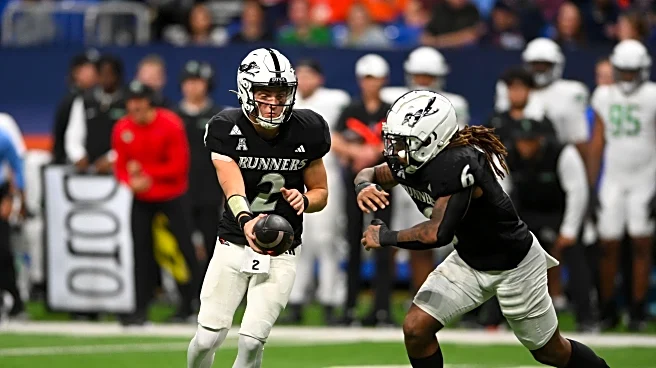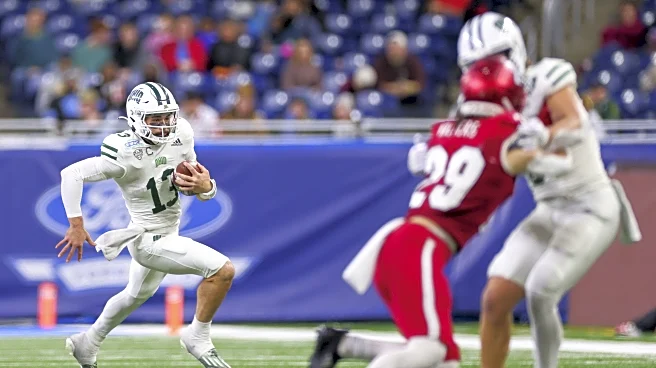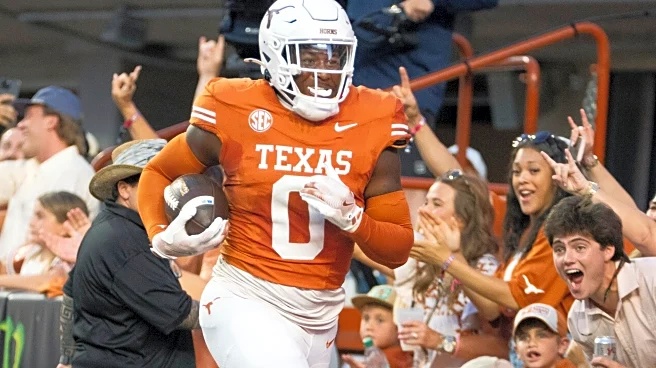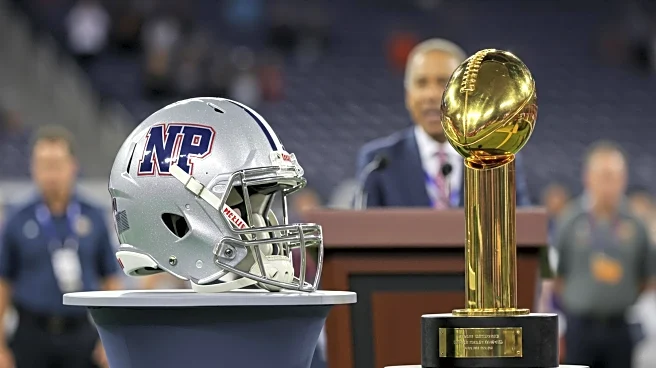What's Happening?
The College Football Playoff in 2025 will feature a 12-team format, ensuring at least one team from outside the power conferences will participate. This format includes five spots for conference champions and seven at-large bids. With four power conferences, a champion from the American, Conference USA, MAC, Mountain West, or Sun Belt will secure a postseason spot. Boise State, James Madison, Liberty, Memphis, Navy, Tulane, and UNLV are identified as strong contenders to be the highest-ranked conference champion outside the power conferences. Boise State is favored in the Mountain West, while James Madison and Liberty face challenges with their schedules. Memphis, Navy, Tulane, and UNLV are also in the mix, each with unique strengths and hurdles to overcome.
Why It's Important?
The inclusion of teams from outside the power conferences in the College Football Playoff highlights the evolving landscape of college football, promoting diversity and competition. This shift can impact recruiting, funding, and the overall prestige of non-power conference teams. It offers these teams a chance to showcase their talent on a national stage, potentially leading to increased media attention and financial benefits. The playoff format encourages competitive balance and provides opportunities for schools to elevate their programs, impacting the broader college football ecosystem.
What's Next?
As the 2025 season progresses, these teams will focus on securing their conference championships and improving their national rankings. Key matchups, such as Boise State's game against Notre Dame and Navy's performance against Notre Dame, will be crucial. Teams will need to navigate their schedules strategically, aiming for strong performances in non-conference games to bolster their playoff resumes. The playoff selection process will scrutinize their records, strength of schedule, and overall performance, influencing future playoff formats and conference alignments.
Beyond the Headlines
The expanded playoff format may lead to increased discussions about the structure and fairness of college football championships. It could prompt debates on the distribution of resources and media coverage between power and non-power conferences. Additionally, the success of these teams might inspire other schools to invest more in their football programs, potentially reshaping the competitive dynamics of college sports. The cultural impact of these changes could foster greater inclusivity and recognition for diverse athletic programs across the nation.













